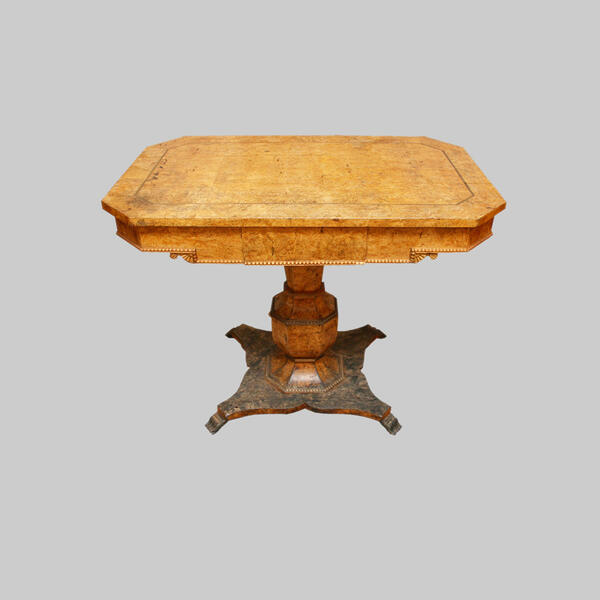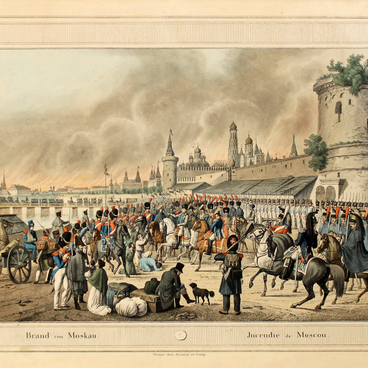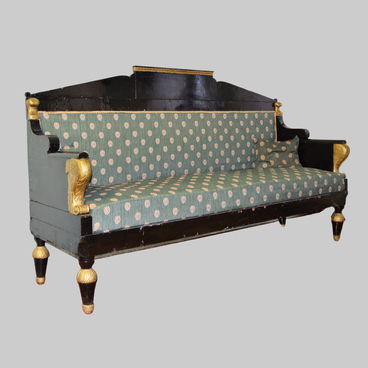Legend has it that this table from the Decembrists in Yalutorovsk belonged to the Decembrist Matvey Muravyov-Apostol. After he left YalUtorovsk, much of his furniture ended up in the hands of merchant MYAsnikov, a friend of Muravyov-Apostol. According to the memoirs of his contemporaries, MatvEy Muravyov-Apostol lived in a well-furnished, cozy and comfortable home. It was impossible to buy comfortable furniture in YalUtorovsk, nevertheless, the atmosphere in the house was quite aristocratic. Almost all the furniture for her brother was selected and sent to Siberia from St. Petersburg by his sister EkateIna BIbikova. Leaving YalUtorovsk, Matvey Muravyov-Apostol distributed all the furniture among local residents.
Side tables were shaped differently, but most often they were designed with one support leg. Since they were mostly in the ceremonial rooms and had more decorative value, the forms and decoration of these tables were rich and complex. In addition to wood, craftsmen also used marble, bronze and other materials to make these tables.
The table displayed in the Decembrist Memorial House is made of KarElian birch, which was first used in furniture production at the end of the 18th century. The surface is covered with veneer - thin slices of wood. The technique, when solid wood was pasted over with veneer, was called veneering. The table was tinted under light rocks. The supporting leg was designed in the form of a vase on four supports. The tabletop was made rectangular, but all four corners were cut off, and a thin frame was inlaid on the top surface, which imitates the shape of the tabletop. A small drawer for small things was mounted in the underframe. The knob of this drawer was concealed, making it almost invisible. The edge of the underframe and the middle part of the leg were decorated with narrow stripes with three-dimensional carvings and bead-like ornaments.
The table was restored at the E.E. Grabar All-Russia Art Research and Restoration Centre. After restoration in the period of May–August 2002, the table was shown at the exhibition of the best restored items in various Trienale-2002 restoration centers. Then it was held at the Smolny Cathedral in St. Petersburg.
Side tables were shaped differently, but most often they were designed with one support leg. Since they were mostly in the ceremonial rooms and had more decorative value, the forms and decoration of these tables were rich and complex. In addition to wood, craftsmen also used marble, bronze and other materials to make these tables.
The table displayed in the Decembrist Memorial House is made of KarElian birch, which was first used in furniture production at the end of the 18th century. The surface is covered with veneer - thin slices of wood. The technique, when solid wood was pasted over with veneer, was called veneering. The table was tinted under light rocks. The supporting leg was designed in the form of a vase on four supports. The tabletop was made rectangular, but all four corners were cut off, and a thin frame was inlaid on the top surface, which imitates the shape of the tabletop. A small drawer for small things was mounted in the underframe. The knob of this drawer was concealed, making it almost invisible. The edge of the underframe and the middle part of the leg were decorated with narrow stripes with three-dimensional carvings and bead-like ornaments.
The table was restored at the E.E. Grabar All-Russia Art Research and Restoration Centre. After restoration in the period of May–August 2002, the table was shown at the exhibition of the best restored items in various Trienale-2002 restoration centers. Then it was held at the Smolny Cathedral in St. Petersburg.



